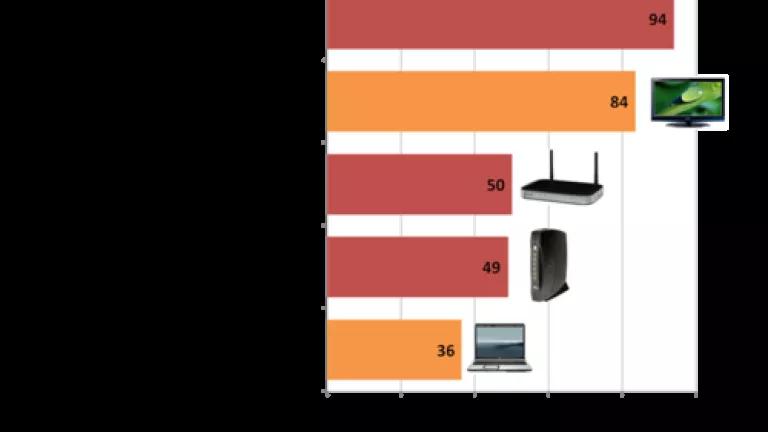
If you’re a high-speed Internet service subscriber like 88 million other U.S. households, you’ve likely got a couple of black boxes in your home that blink all day and all night long, too, eating electricity as they stand ready to help you access the Internet and move digital content to computers, printers, and other electronics.
We have a good understanding and policies in place to help reduce the energy use of the TVs, computers, game consoles, and set top boxes that our small network equipment feeds. But until now, there’s been virtually no information available on how much energy is consumed in individual households—or nationally—by such equipment as modems that help us link to the Internet and routers to transmit data around our homes.
To fill that void, I hired the consulting firm Ecova to help NRDC measure the power use of 60 various household small network devices and answer these nagging questions.
Today NRDC is releasing the first-ever, in-depth analysis of the amount of energy used – and its cost. Here’s what we found:
- The national energy use of these devices really adds up. In 2012, small network equipment consumed more than a billion dollars and three dirty coal power plants’ worth of electricity (with pollution emissions equal to what comes out of the tailpipes of 1.1 million vehicles every year).
- Small network equipment eats as much electricity annually as all the 1.2 million homes in the Silicon Valley area, which ironically is the hi-tech capital of the world.
- There are approximately 145 million of these little boxes in people’s homes and on a per household basis, they consume just under 100 kilowatts per year – more than a new energy efficient 32-inch TV, twice as much as a new 14-inch ENERGY STAR laptop computer, and 30 times as much as a cell phone charger.
The good news is that more energy efficient designs are on the way. Many new models in 2014 will use power-scaling technology, which is a fancy way of saying these devices will automatically use less power when they are just sitting there, waiting to receive or send a message or data. Once again the numbers will really add up, but in a good way:
Replacing today’s wasteful equipment with more efficient models could save U.S. consumers about $330 million on their electricity bills each year. With 145 million pieces of small network equipment in use in America’s homes, making them more efficient also reduces our power generation needs and results in less pollution.
The energy savings will be even greater once you consider the networking equipment in commercial buildings that also will benefit from technological improvements.
And pretty soon you should be seeing those blue ENERGY STAR® labels on the modems and routers on store shelves or you’ll be able to ask your Internet service provider to give you more energy-efficient models as part of your subscription package. The Environmental Protection Agency’s ENERGY STAR program is scheduled soon to approve an energy-saving specification that small network equipment will have to meet to earn the label that indicates the devices save energy – without sacrificing features or functionality.
And having that blue label is going to do a whole lot more for your electric bill than those blinking lights.
